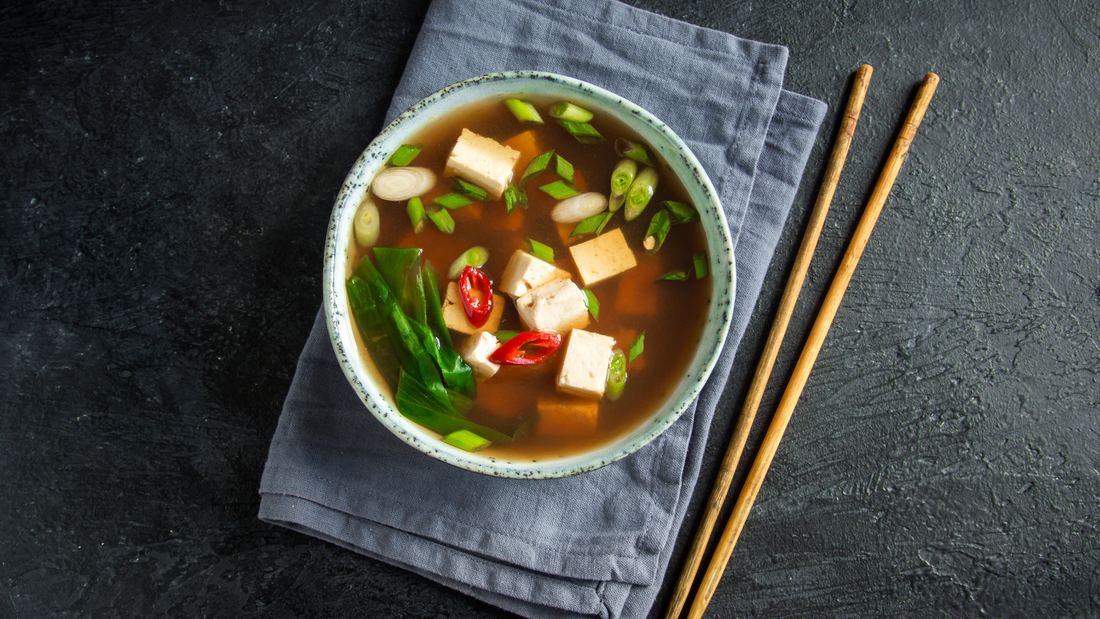|
What is miso?
MIso - you get miso soup with your sushi platter, but do you know what it is? Miso is a fermented bean paste. Miso's origin Depending on the source of information, miso either originated in ancient China and then introduced to Japan over 1,000 years ago by Buddhist priests or it originated in Japan in the Yayoi period, 300 BCE to 300 CE. Grain and fish misos had been manufactured in Japan since the Jōmon period, 14,000–300 BC. It’s possible that citizens of both countries figured out that you can ferment grains or legumes with salt to preserve them. Curing food with salt to preserve it crosses cultures.
1 Comment
For many, dramatic improvements in health is experienced by adding bone broth to their customized regimens for various health issues. Osteoporosis, digestive challenges, muscle cramping and stiffness, nerve dysfunction, joint pain, and weak hair and nails are just a few of the many ailments that Naturopathic Doctors and other health practitioners have found to respond well to regular consumption of properly made bone broth.
Bone broth is rich in easily absorbed minerals - calcium, magnesium, phosphorus, silicon, sulphur and a number of trace minerals, all of which help contribute to optimal nourishment and function of our musculoskeletal and nervous systems. Gelatin, found in properly made bone broth, nourishes your bones and teeth, which maximizes strength and flexibility. Bone broth is also rich in glucosamine and chondroitin sulphates that support suffering joints. For many, the greatest benefit of regular intake of bone broth is improved gut health. Components of cartilage found in bone broth support immune system function by activating different types of white blood cells. Pretty awesome. It's pretty simple to make a perfect, nutrient-rich bone broth. You can always get it from us, but if you wish to make it at home, here's how to make about 4 litres: Ingredients: About two handfuls of bone, preferably from an organically-raised animal 3 ribs celery 3 large carrots (no need to peel, just wash em well) 4 medium yellow onions, outer skins peeled off and halved 1 large bunch of parsley 1 large piece of kombu kelp aka seaweed (optional - not everyone loves this flavour but it's packed full of nutrients) 2 tablespoons apple cider vinegar (very important - the vinegar serves to help lure the nutrients out of the bone.) Fresh herbs to your taste Directions: 1. Fill a large stock pot with 4 litres of cold water.Add all ingredients and bring to a boil. 2. Let your broth simmer for 5 to 10 hours and then cool for an hour. The larger your bones, the longer you want to simmer. (Fish bones only require about 3 hours of simmer time; chicken bones about 5 hours, and beef bones at least 8 hours for optimal nutrient extraction. 3. Use a strainer to scoop the solids out of your broth and use a slotted spoon or spatula to squeeze as much liquid goodness as you can out of your overcooked vegetables. 4. Transfer your bone broth to air-tight containers and store in the refrigerator. Enjoy! |
About UsWe love making soup that is both super tasty and healthy for your body soul. We use less salt than traditional restaurants do and focus on clean products and nutritional balance. Most of our soups are designed to be eaten as a meal, with a grain, a veggie, and protein in each soup. Archives
February 2023
Categories |

 RSS Feed
RSS Feed